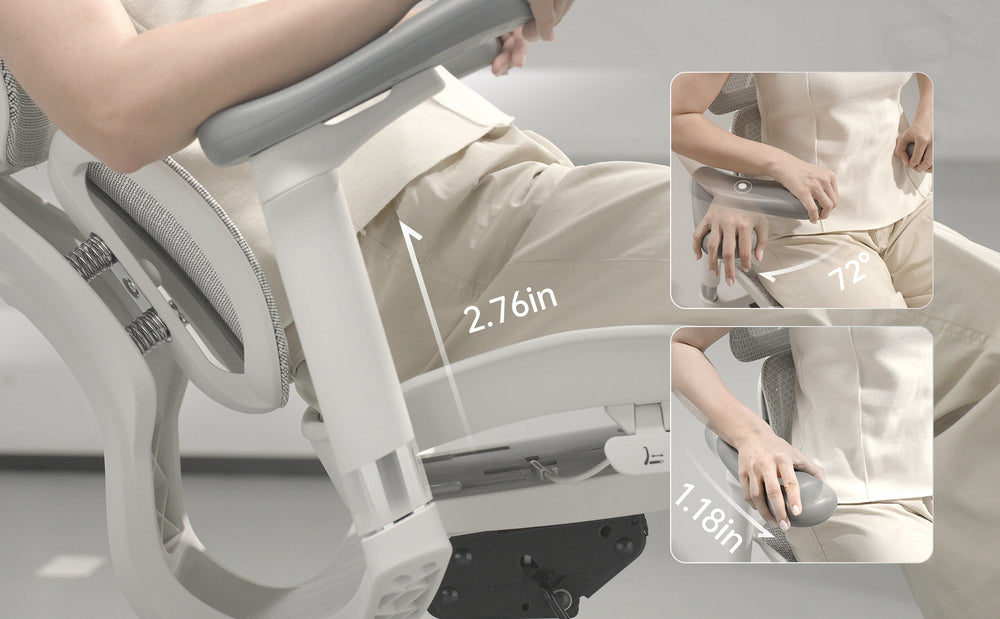Back pain is a common ailment affecting millions of people worldwide. Whether it's due to poor posture, long hours of sitting, or underlying medical conditions, finding relief from back pain is a top priority for many. One debated solution is using a pillow in chairs to alleviate discomfort and promote better spinal alignment. But is this practice truly beneficial, or does it come with its own set of drawbacks? In this comprehensive guide, we delve into the pros and cons of using a pillow in chairs for back pain relief.
Understanding Back Pain
Before delving into the effectiveness of using pillows for back pain, it's crucial to understand the underlying causes of this prevalent issue. Back pain can stem from various factors, including:
Poor Posture: Prolonged periods of sitting or standing with improper posture can strain the muscles and ligaments supporting the spine, leading to discomfort and pain.
Muscular Imbalance: Weakness or tightness in certain muscle groups, particularly those of the core and back, can contribute to imbalances that result in back pain.
Degenerative Conditions: Conditions such as osteoarthritis, spinal stenosis, and herniated discs can cause structural changes in the spine, resulting in chronic pain.
Injury: Trauma from accidents, falls, or sports-related injuries can damage the structures of the spine, leading to acute or chronic pain.
Given the multifaceted nature of back pain, addressing it often requires a combination of lifestyle modifications, physical therapy, ergonomic adjustments, and sometimes medical intervention. Using a pillow in chairs is one strategy that individuals employ to mitigate discomfort, but its efficacy depends on various factors.
Pros of Using a Pillow in Chairs for Back Pain
Lumbar Support: One of the primary benefits of using a pillow in chairs is the provision of lumbar support. Placing a pillow or cushion behind the lower back helps maintain the natural curve of the spine, reducing strain on the lumbar region.
Improved Posture: Proper spinal alignment is essential for relieving back pain and preventing further discomfort. A strategically placed pillow can encourage users to sit upright, promoting better posture and reducing slouching.
Pressure Relief: Sitting for extended periods can exert pressure on the spine and surrounding muscles, leading to discomfort. A well-positioned pillow can help distribute body weight more evenly, alleviating pressure points and reducing the risk of developing pressure ulcers.
Customization: One size does not fit all when it comes to back support. Pillows come in various shapes, sizes, and materials, allowing users to customize their seating experience based on individual preferences and needs.
Versatility: Pillows are portable and can be used in various settings, including office chairs, car seats, and even while reclining on the couch. This versatility ensures that individuals can maintain proper spinal support regardless of their environment.
Cons of Using a Pillow in Chairs for Back Pain
Overreliance: While pillows can provide temporary relief from back pain, relying too heavily on them may prevent individuals from addressing the root causes of their discomfort. Instead of relying solely on external support, it's essential to focus on strengthening the core muscles and adopting ergonomic habits.
Risk of Dependency: Using a pillow in chairs may lead to a dependency on external support for maintaining proper posture. Over time, individuals may find it challenging to sit comfortably without the aid of a pillow, potentially exacerbating their reliance on external devices.
Ineffective Support: Not all pillows are created equal, and some may fail to provide adequate support for the spine. Using an improperly designed or positioned pillow may do little to alleviate back pain and could even exacerbate existing issues by promoting poor posture.
Discomfort: While pillows are intended to provide comfort and support, they can sometimes cause discomfort, especially if they are too soft, too firm, or poorly positioned. Individuals may experience increased pressure on certain areas of the back or discomfort due to inadequate support.
Limited Mobility: Depending on the size and shape of the pillow, individuals may experience restricted movement while sitting. This limitation could affect productivity and comfort, particularly in work or social settings where freedom of movement is essential.
Conclusion
In conclusion, using a pillow in chairs for back pain relief can offer both advantages and disadvantages. While pillows can provide lumbar support, promote better posture, and alleviate pressure on the spine, they also pose the risk of overreliance, ineffective support, and discomfort. Ultimately, the effectiveness of using a pillow in chairs depends on various factors, including the individual's specific needs, preferences, and the underlying causes of their back pain.
For those considering incorporating pillows into their seating arrangements, it's essential to choose products designed specifically for back support, experiment with positioning to find optimal comfort, and complement pillow use with other strategies such as regular movement breaks, ergonomic adjustments, and strength-building exercises. By taking a holistic approach to back pain management, individuals can maximize comfort, minimize discomfort, and promote long-term spinal health.



